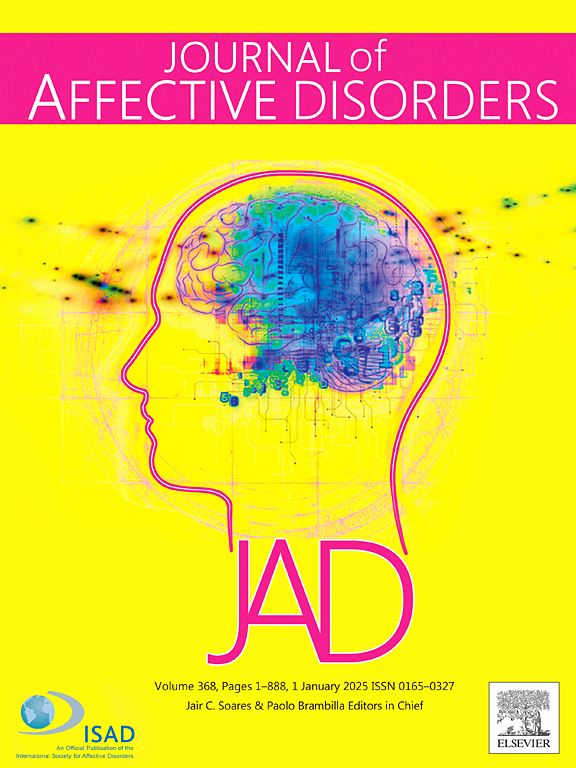Bidirectional mediation of psychological distress and food addiction influenced by childhood trauma among adolescents
IF 4.9
2区 医学
Q1 CLINICAL NEUROLOGY
引用次数: 0
Abstract
Background
This study aims to explore the relationship between childhood trauma, psychological distress, and food addiction in adolescents.
Methods
The sample comprised 4560 adolescents (46.67 % females) aged 12–19 years (15.21 ± 1.75) who participated in the School-based Evaluation Advancing Response for Child Health (SEARCH) survey, a mixed longitudinal cohort study in Jiangsu, China. Bidirectional mediation was used to assess the interplay among childhood trauma, psychological distress, and food addiction derived from a self-report survey.
Results
Among participants, 29.67 % reported experiencing at least one type of trauma during childhood, and 2.80 % exhibited significant symptoms of food addiction. The prevalence of depression, anxiety, and stress among participants were 32.85 %, 47.52 %, and 24.80 %, respectively. Emotional neglect (OR = 2.12[1.44–3.14]), emotional abuse (OR = 5.77 [3.96–8.41]), physical neglect (OR = 1.73 [1.17–2.56]), and physical abuse (OR = 3.53 [2.26–5.52]) had a direct positive predictive effect on food addiction. Trend analyses showed that more types of childhood traumas, and higher levels of depression, anxiety, and stress were significantly associated with higher food addiction incidence. Bidirectional mediation analysis identified that both psychological distress and food addiction mediated their respective relationships with childhood trauma. The mediating effect of psychological distress was larger than that of food addiction.
Limitations
The study was limited by the use of self-reported cross-sectional data.
Conclusion
This study indicated a bidirectional mediation between psychological distress and food addiction in adolescents, within the context of childhood trauma. The effect size of the forward mediator was larger than the reverse mediator, which may guide future treatments.
求助全文
约1分钟内获得全文
求助全文
来源期刊

Journal of affective disorders
医学-精神病学
CiteScore
10.90
自引率
6.10%
发文量
1319
审稿时长
9.3 weeks
期刊介绍:
The Journal of Affective Disorders publishes papers concerned with affective disorders in the widest sense: depression, mania, mood spectrum, emotions and personality, anxiety and stress. It is interdisciplinary and aims to bring together different approaches for a diverse readership. Top quality papers will be accepted dealing with any aspect of affective disorders, including neuroimaging, cognitive neurosciences, genetics, molecular biology, experimental and clinical neurosciences, pharmacology, neuroimmunoendocrinology, intervention and treatment trials.
 求助内容:
求助内容: 应助结果提醒方式:
应助结果提醒方式:


